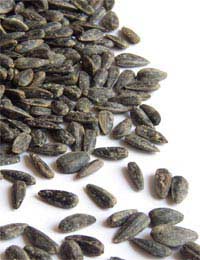
If you grow your own vegetables, or you know someone who does, then you could save money by drying seed for next year. It’s a simple principle that enables you to grow cheaper food every year.
What Seeds Can You Save?
People have been saving seed for centuries. Without them, we might have lost thousands of varieties of fruit and vegetable: the commercial seed merchants only maintain a handful of the varieties that have been grown in Britain for the past few decades. So it’s important – for history, and for biodiversity – that we play a part in preserving our favourite vegetable varieties.
For our purposes, vegetables can be categorised into two basic groups: self-pollinators and cross-pollinators. Self-pollinators (such as peas and tomatoes) carry flowers with anthers and stigma, or grow in such a way as to pollinate without the need for animals or wind. Cross-pollinators require bees, wind, or water to transfer the pollen from anthers to stigma. Clearly, self-pollinators are the easiest types from which to collect seed.
Here are guidelines to help you collect seed from some of the easiest species – pea, leek and tomato. If you’re interested in collecting seed from other varieties, you can obtain comprehensive information about seed saving by contacting the Heritage Seed Library.
Saving Pea Seed
Peas are easy to grow, require very little maintenance, and produce an abundance of pods. Choose round-seeded peas for the best chances of success – many (such as Meteor) can be sown in the winter, giving the plants a long growing season. This means they’ll have plenty of time to dry out on the plants at the end of summer. The early types are also less susceptible to pea moth (a pest that munches through the seeds inside the pods). If you wish to preserve the variety’s characteristics, grow just one type of pea – or grow the second type more than 20 metres away.
To save the seed, leave the last few pods on your plants and let them dry naturally. When the plants turn brown and dry, pull off the pods and shell the peas. Dry them on a rack or tray in a cool place, remove bits of chaff, then store in an envelope until next year.
Saving Leek Seed
Leeks are also very easy to collect seed from. They are open-pollinating, which means that one plant pollinates the next via wind or bees. It is a good idea to grow only one variety of leek during the season, to make sure that your seed is pure. You will get a good number of seeds from one flower head.
In winter, choose a couple of healthy leeks to leave in the ground for seed. The centre of the leek firms up and sprouts, forming a pretty allium flower in early spring. Watch the flower head carefully now – when it starts to dry and you can see seeds forming, snip off the entire head and put it into a paper bag. Hang upside down to dry and the seeds will fall into the bag for storage. Then it’s just a matter of sifting through for debris and storing in a dark place.
Saving Tomato Seed
Most tomatoes self-pollinate, which makes seed saving easy. All you need do is grow the tomatoes as usual. When the fruits are ripe, you can collect seed. Simply remove seed from the fruits, wash it under cold water and dry on kitchen towel. The HSL advises keeping the seed on a piece of kitchen towel, in a cool, dark place, until the following spring. You can then wet the kitchen towel in a seed tray, cover it with potting compost and grow the seedlings ready for transplanting.
